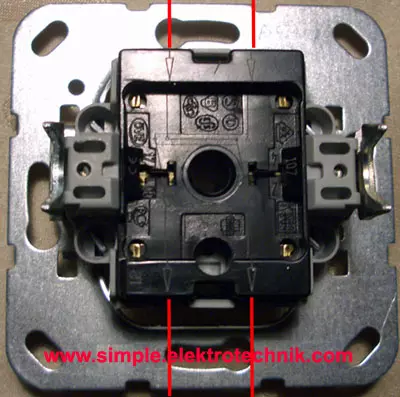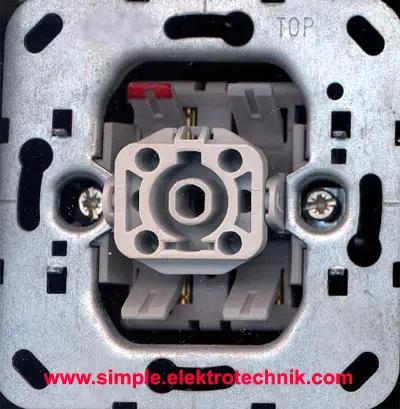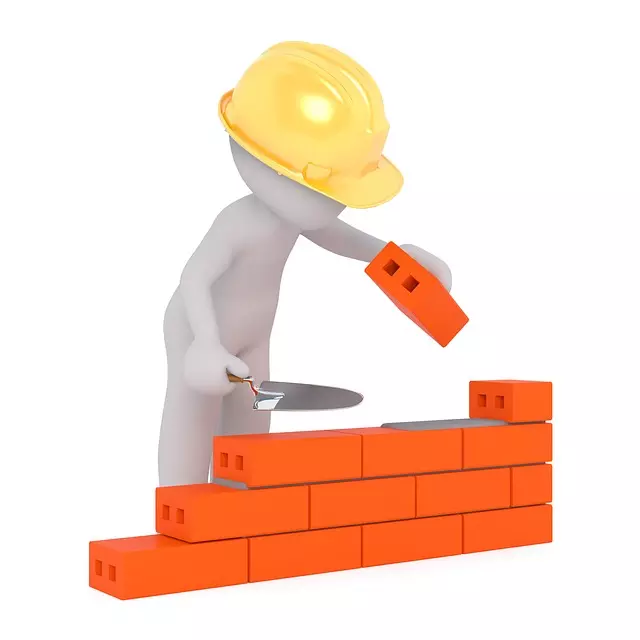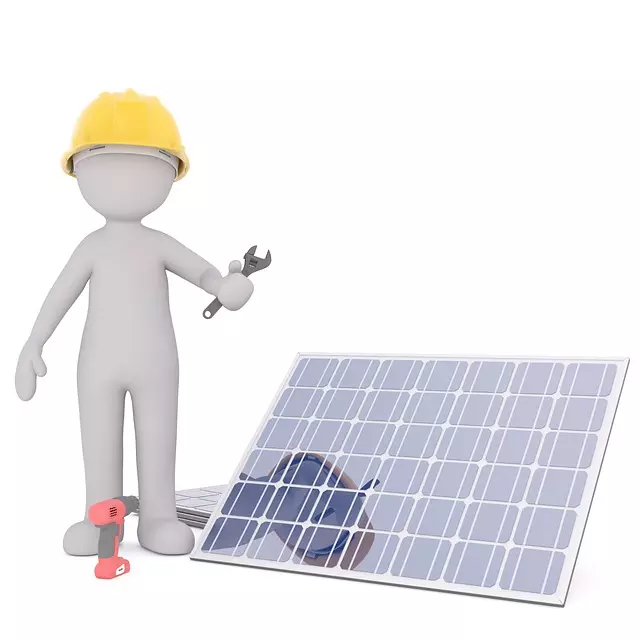Instructions for Installing and Connecting a Cross Switch:
A cross switch is an advanced type of electrical switch used in combination with two-way switches to establish an electrical connection between three or more different switch states. It allows controlling an electrical load, such as a lamp or a socket, from several different switch locations.
A typical example of using a cross switch is controlling a lamp from three or more different locations. Let's consider a long hallway lighting that needs to be switched on and off from both ends of the hallway and some intermediate positions. In this case, conventional two-way switches are installed at the ends of the hallway, and cross switches are used at the intermediate positions.
Assuming the lamp is currently turned off, if one of the two-way switches at one end of the hallway is activated to turn on the lamp, we can change the switch state using the cross switches at the intermediate positions. When we activate one of the cross switches, the lamp remains on. However, if we activate another cross switch, the lamp will be turned off, even though the two-way switch at the other end of the hallway is still in the "on" position.
So, the combination of two-way switches and cross switches allows controlling the electrical load from multiple different locations without having to go to the ends of the hallway. This is particularly useful in situations where an electrical load needs to be operated from several switch points, such as long corridors, large rooms, or staircases.
Structure and Function of a Cross Switch:
The structure of a cross switch is similar to that of a two-way switch and includes four terminals:

- Two input terminals: These terminals are connected to the two corresponding conductors from the first two-way switch. The input terminals of a cross switch are usually marked with "↓" and "↓".
- Two output terminals: These terminals are connected to the two corresponding conductors from the next (or last) two-way switch. The output terminals of a cross switch are usually marked with "↑" and "↑".
A cross switch is used in circuits where an electrical load, such as a lamp, needs to be controlled from three or more different switch locations. To achieve this functionality, at least three switches are required, with one referred to as the "cross switch" and the other two acting as "two-way switches."
The function of a cross switch is based on the arrangement of contacts between the terminals. When the switch is in one position, both input terminals are connected to both output terminals.
By operating the cross switch, the connection is crossed, meaning both input terminals are effectively swapped with the output terminals. By properly combining the states of the cross switches, the electrical load can be controlled from different locations without the need to reach a specific two-way switch.
Proper Wiring of a Cross Switch:
The correct wiring of a cross switch requires precise and accurate connections to ensure proper functioning. As a cross switch contains two mechanically linked single-pole switches, it is essential to follow the correct connections according to the manufacturer's instructions. Here is a straightforward guide for the proper wiring of a cross switch:

- Remove the cover of the switch box where the cross switch will be installed.
- Take note of the positions of the terminals on the cross switch. Typically, there are four terminals: two input terminals marked with "↓" and "↓," and two output terminals marked with "↑" and "↑."
- Connect the two input terminals to the two corresponding conductors from the first two-way switch.
- Connect the two output terminals to the two corresponding conductors from the next (or last) two-way switch.
- Carefully check that all connections are secure and firm. Suitable terminal connectors or screw connections should be used to establish reliable connections.
The cross switch allows controlling an electrical load from three or more different switch locations.
When the cross switch is operated, the contacts switch from a "straight" connection of the two pairs of terminals ("1" - "1" and "2" - "2") to a "crossed" connection ("1" - "2" and "2" - "1"). This allows controlling the electrical load from different switch locations without the need to reach a specific two-way switch.
If unsure or in need of assistance, it is advisable to consult a professional to avoid potential errors and ensure that the cross switch is properly and safely connected. Carefully following the wiring instructions ensures reliable circuit operation.
Back of the Cross Switch
Input 1 Input 2

Output 1 Output 2
Front of the Cross Switch

Instructions for Installing and Connecting a Cross Switch:
Installing and connecting a cross switch requires careful steps to ensure proper and safe functionality. Here is a straightforward guide for installing and connecting a cross switch:

- Make sure the power supply to the circuit where the cross switch will be installed is turned off. Switch off the corresponding circuit breaker or remove the fuse to prevent accidental power-on during installation.
- Take the cross switch out of the packaging and check if it is complete and undamaged.
- Remove the cover of the switch box to access the wiring.
- Identify the terminals on the cross switch. Typically, there are four terminals: two input terminals marked with "↓" and "↓," and two output terminals marked with "↑" and "↑."
- Check the manufacturer's schematic to identify the correct terminals for connections.
- Connect the 2 input terminals to the two corresponding conductors from the first two-way switch.
- Connect the 2 output terminals to the two corresponding conductors from the next (or last) two-way switch.
- Carefully check that all connections are secure and firm. Use appropriate terminal connectors or screw connections.
- Securely place the cover of the switch box back in position.
- Turn the power supply back on by switching on the circuit breaker or inserting the fuse.
- Test the cross switch to ensure it functions correctly. Operate the switch and check if the load turns on and off.
Note: The cross switch allows controlling an electrical load from three or more different switch locations. If using multiple cross switches, corresponding wires of the cross switches should be connected to achieve the desired functionality.
If you are unsure or have no experience with electrical installations, it is recommended to seek assistance from a qualified electrician to perform the installation correctly and safely. Safety is always paramount when dealing with electrical work.

Cross switches have various applications in electrical engineering.
Here are some examples:
- Lighting circuits. Cross switches enable turning lights on and off from three or more different positions. This is particularly useful in large rooms or corridors where multiple switch locations are needed to conveniently control the light.
- Staircase lighting. With cross switches, lights can be controlled in different floors or sections of a staircase. Conventional two-way switches can be installed at the ends of the staircase, while cross switches are used at intermediate points to control the light from various positions.
- Corridor circuits. In long hallways or corridors, cross switches allow controlling the light from three or more positions to ensure efficient lighting along the entire corridor.
- Circuits with multiple switches. In rooms with complex circuit requirements, such as conference rooms or event halls, cross switches are used to control the light from different switch locations.
- Outdoor lighting. Cross switches are also used to control outdoor lighting, such as in garden areas or on terraces, allowing convenient lighting control from different locations.
The use of cross switches in these applications offers the advantage of controlling an electrical load from multiple different switch locations without the need to go to a specific switch. This achieves convenience, flexibility, and efficiency in lighting control. However, it is essential to ensure correct wiring and connection of the cross switches according to the manufacturer's instructions to ensure reliable functionality and safety.
Elektrosicherheit: Richtlinien und Vorsichtsmaßnahmen für einfache elektrotechnische Arbeiten
Die Sicherheit hat oberste Priorität.

- Alle hier bereitgestellten Anleitungen und Informationen dienen rein informativen Zwecken und sollen ausschließlich zur Informationsbeschaffung und Weiterbildung verwendet werden. Sie sollten nicht als Ersatz für professionelle Beratung angesehen werden. Bei Zweifeln empfiehlt es sich, einen qualifizierten Elektriker hinzuzuziehen, um fachkundige Unterstützung zu erhalten.
- Es ist wichtig, die örtlichen Vorschriften und Bestimmungen bei elektrischen Arbeiten zu beachten. Arbeiten mit Strom sollten nur von qualifizierten Fachleuten durchgeführt werden, da sie lebensgefährlich sein können.
- Fehler in Anleitungen und Schaltbildern sind möglich. Der Anbieter übernimmt keine Gewähr oder Haftung für Schäden oder Verletzungen, die aus der Umsetzung der bereitgestellten Informationen resultieren könnten. Es liegt in Ihrer Verantwortung, die Richtigkeit der Informationen zu überprüfen und die erforderlichen Sicherheitsvorkehrungen zu treffen.
- Die Verwendung geeigneter persönlicher Schutzausrüstung (PSA) ist entscheidend, um die Sicherheit bei elektrotechnischen Arbeiten zu gewährleisten. PSA schützt vor Stromschlägen, Augenverletzungen, thermischen und mechanischen Gefahren. Es ist jedoch wichtig zu beachten, dass PSA allein nicht ausreicht und durch Fachwissen, Fähigkeiten und die Einhaltung von Sicherheitsvorschriften ergänzt werden muss.
- Arbeiten an Teilen, die unter Spannung stehen, sind strengstens untersagt. Vor Beginn der Arbeiten müssen geeignete Sicherheitsvorkehrungen getroffen werden, einschließlich des Freischaltens der Anlage.
- Bei Schäden durch mangelhafte Elektroinstallation haftet der Errichter der Anlage gemäß den geltenden gesetzlichen Bestimmungen.
- Diese Zusammenfassung von Richtlinien und Vorsichtsmaßnahmen ist nicht umfassend. Bei Unsicherheiten ist es ratsam, einen qualifizierten Elektriker zu konsultieren oder sich an örtliche Vorschriften und Bestimmungen zu halten, um maximale Sicherheit zu gewährleisten.
- Die ordnungsgemäße Installation und Wartung von elektrischen Anlagen und Geräten ist von großer Bedeutung, um mögliche Gefahren zu minimieren und ein sicheres Umfeld zu schaffen.